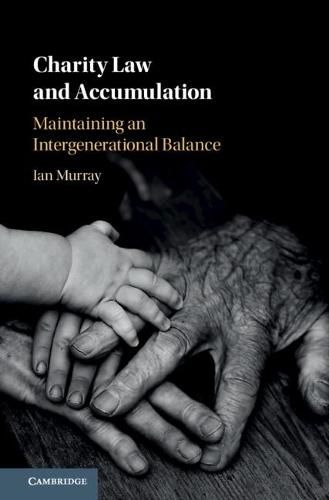Readings Newsletter
Become a Readings Member to make your shopping experience even easier.
Sign in or sign up for free!
You’re not far away from qualifying for FREE standard shipping within Australia
You’ve qualified for FREE standard shipping within Australia
The cart is loading…






Much has been written in charity law on the type of benefits that charities can provide - charitable purposes - and towards whom such benefits must be directed - the public benefit question. Almost nothing has been written about when benefits must be provided. However, accumulation of assets by charities raises profound ethical, economic and social considerations that are highlighted by the present retreat of the welfare state and the impact of the Global Financial Crisis and COVID-19. This book analyses the issue through a normative, doctrinal and comparative analysis of the legal constraints upon accumulation by charities. It reveals that the legal restraints contain significant gaps in relation to the intergenerational distribution of benefits and to the balance of decision-making between generations. In particular, the book asserts that there is room for law reform to better identify and incorporate principles of intergenerational justice into the regulation of charities.
$9.00 standard shipping within Australia
FREE standard shipping within Australia for orders over $100.00
Express & International shipping calculated at checkout
Much has been written in charity law on the type of benefits that charities can provide - charitable purposes - and towards whom such benefits must be directed - the public benefit question. Almost nothing has been written about when benefits must be provided. However, accumulation of assets by charities raises profound ethical, economic and social considerations that are highlighted by the present retreat of the welfare state and the impact of the Global Financial Crisis and COVID-19. This book analyses the issue through a normative, doctrinal and comparative analysis of the legal constraints upon accumulation by charities. It reveals that the legal restraints contain significant gaps in relation to the intergenerational distribution of benefits and to the balance of decision-making between generations. In particular, the book asserts that there is room for law reform to better identify and incorporate principles of intergenerational justice into the regulation of charities.